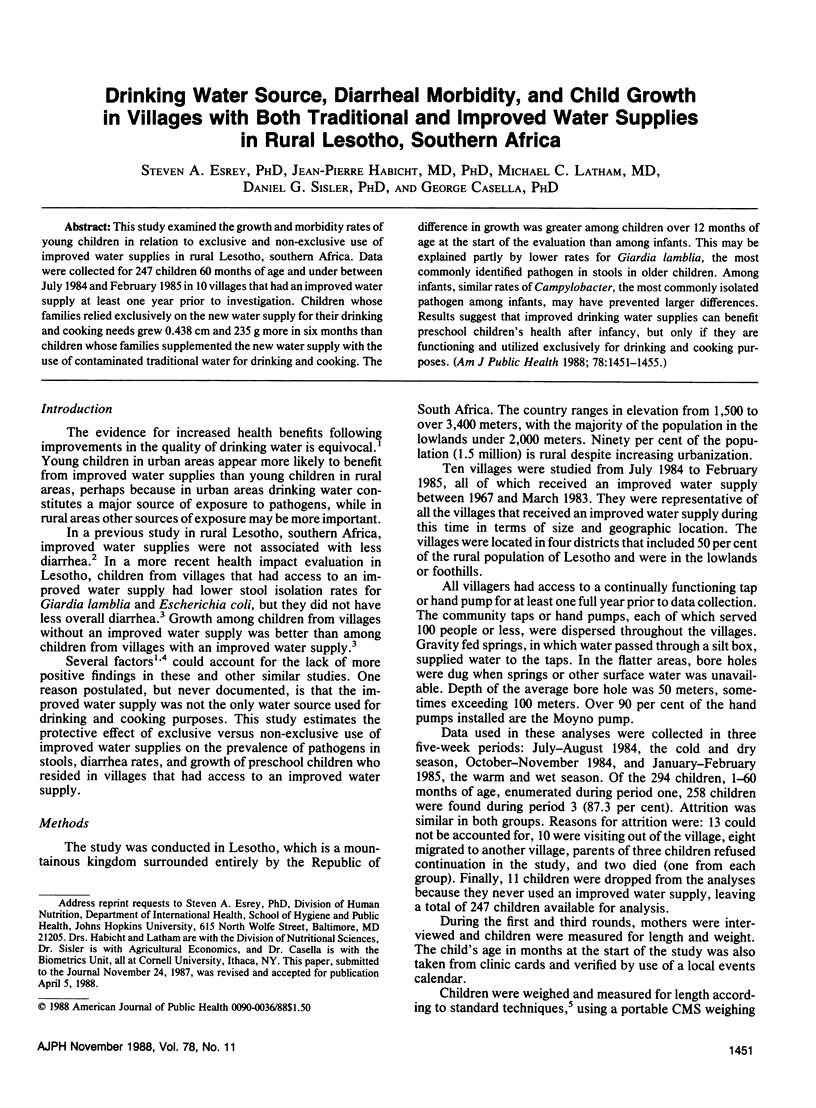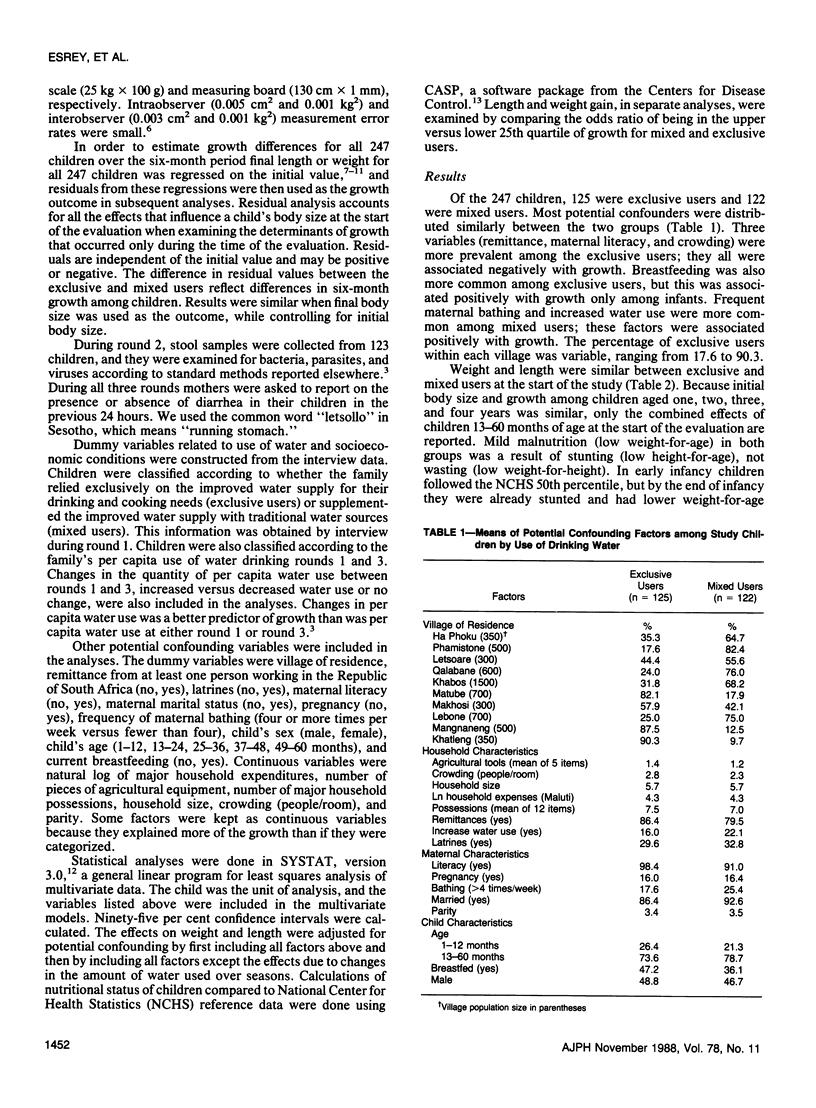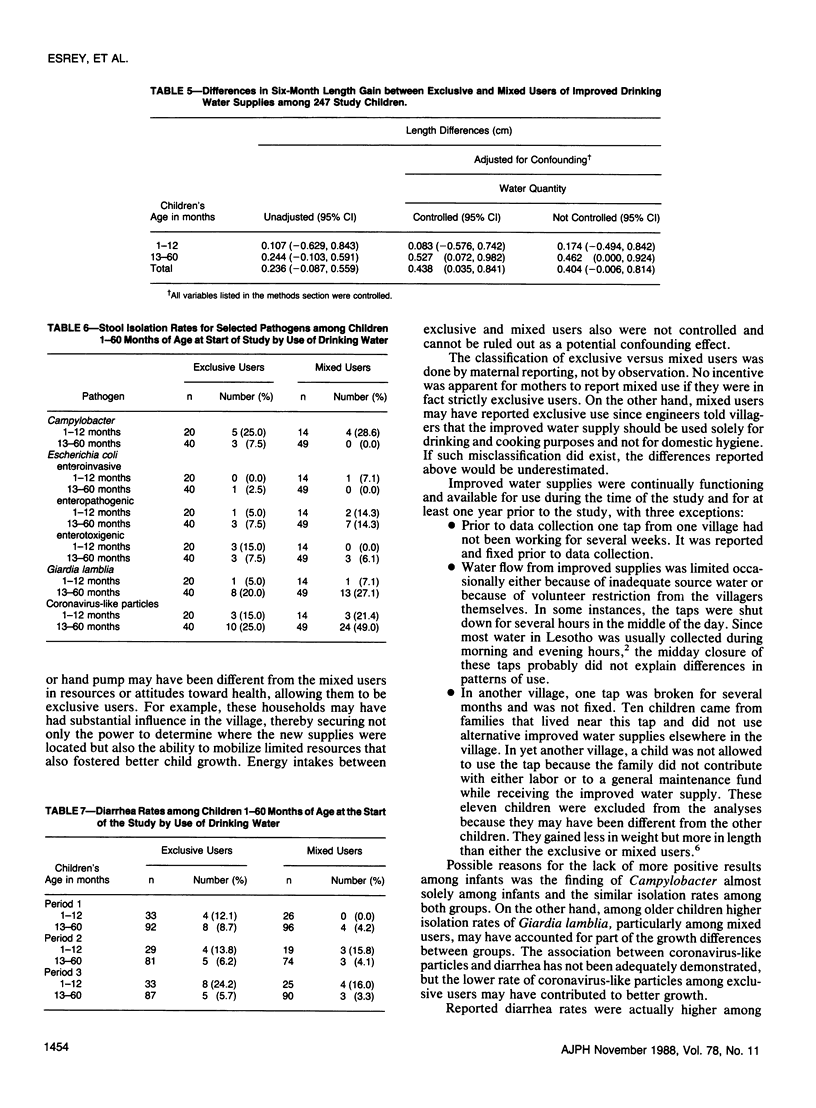Abstract
This study examined the growth and morbidity rates of young children in relation to exclusive and non-exclusive use of improved water supplies in rural Lesotho, southern Africa. Data were collected for 247 children 60 months of age and under between July 1984 and February 1985 in 10 villages that had an improved water supply at least one year prior to investigation. Children whose families relied exclusively on the new water supply for their drinking and cooking needs grew 0.438 cm and 235 g more in six months than children whose families supplemented the new water supply with the use of contaminated traditional water for drinking and cooking. The difference in growth was greater among children over 12 months of age at the start of the evaluation than among infants. This may be explained partly by lower rates for Giardia lamblia, the most commonly identified pathogen in stools in older children. Among infants, similar rates of Campylobacter, the most commonly isolated pathogen among infants, may have prevented larger differences. Results suggest that improved drinking water supplies can benefit preschool children's health after infancy, but only if they are functioning and utilized exclusively for drinking and cooking purposes.
Full text
PDF




Selected References
These references are in PubMed. This may not be the complete list of references from this article.
- Blum D., Feachem R. G. Measuring the impact of water supply and sanitation investments on diarrhoeal diseases: problems of methodology. Int J Epidemiol. 1983 Sep;12(3):357–365. doi: 10.1093/ije/12.3.357. [DOI] [PubMed] [Google Scholar]
- Butz W. P., Habicht J. P., DaVanzo J. Environmental factors in the relationship between breastfeeding and infant mortality: the role of sanitation and water in Malaysia. Am J Epidemiol. 1984 Apr;119(4):516–525. doi: 10.1093/oxfordjournals.aje.a113769. [DOI] [PubMed] [Google Scholar]
- Esrey S. A., Habicht J. P. Epidemiologic evidence for health benefits from improved water and sanitation in developing countries. Epidemiol Rev. 1986;8:117–128. doi: 10.1093/oxfordjournals.epirev.a036290. [DOI] [PubMed] [Google Scholar]


